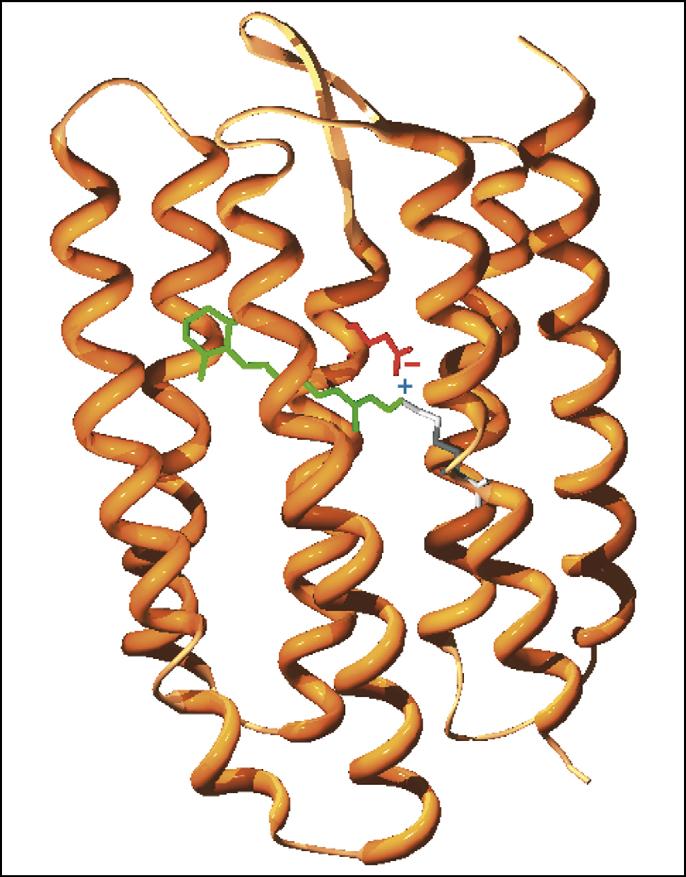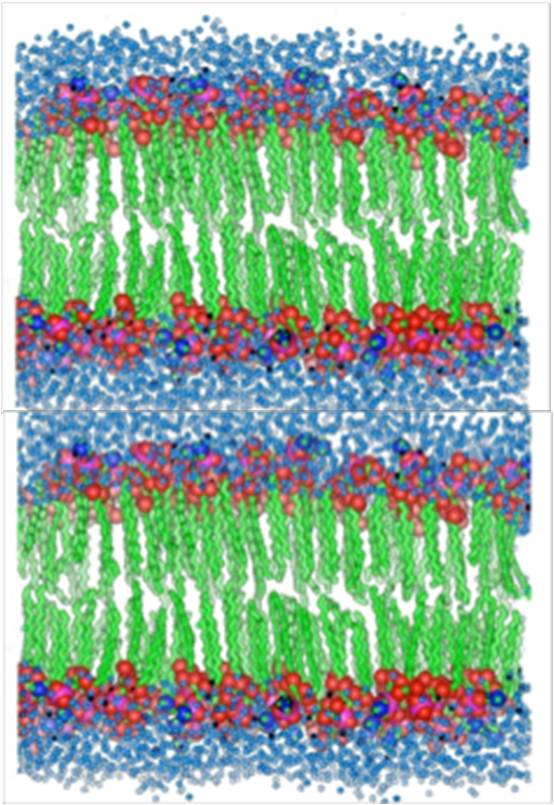|
|
FemtoSpec Laboratory |
Home | Research | People | Publications | About Us
Research Topics
Sensory Rhodopsin
| Sensory rhodopsin is protein belonging to the rhodopsin family of proteins which is prevalent throughout nature from bacterial cells to the rods and cones in the retina of human eyes. Sensory rhodopsin is photo-reactive, meaning that light triggers the protein to function. This makes it ideal for study with lasers since they can provide both the means to excite the protein as well as a way to measure its dynamic response. The Ultra-fast laser will allow us to measure protein response on the order of femtoseconds breaking into a total new timescale for measuring protein dynamics. This will provide insight into sensory rhopsin in particular, as well as a model for protein studies in general. |
Protein Rhodopsin |
Nitrous Oxide and Water Dynamics
|
Lipid Bilayers in Water (simulation) |
Water is the most abundant molecule in our bodies, and almost every biologically relevant process takes place in water. So understanding the dynamics of water is integral to understanding any chemical-physical process in a cell. With our laser system we can perform 'pump-probe' experiments where part of the beam excites the sample and another part is used to measure the response. One system, in particular, that we are studying is the anesthetic gas Nitrous Oxide. The ultimate aim of this project and others like it is to solve to long-standing problem of how anesthetics actually work. |
Spectroscopy of Complex Materials
| Ultrafast spectroscopy techniques can be used to study a large variety of complicated systems including superconductors, colassal magento-resistors, and spintronics. The ultrafast laser allows us to probe complicated materials at the fundemantal timescales of electronic and atomic motion. With it, we can more easily study the dynamic response of materials. |  |



